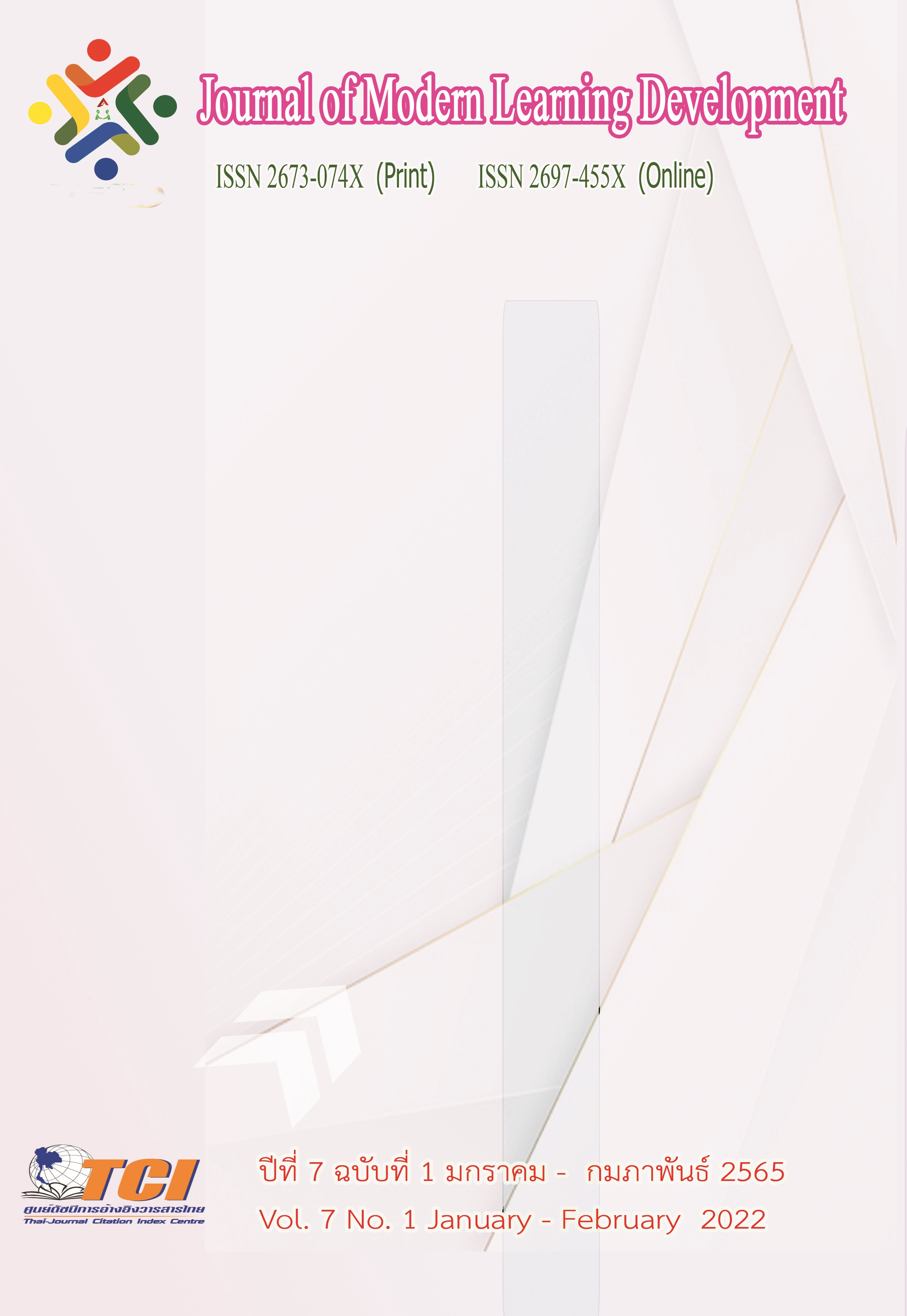Guidelines for the Export of Fabrics and Apparel Products of the Business OTOP 5 Stars in the Southern Border Provinces
Main Article Content
Abstract
The objectives of this research article are: 1. to study the business operating conditions of cloth and apparel product operators of the 5-star OTOP business in the southern border provinces; and attire of the 5-star OTOP business in the southern border provinces This is a qualitative research. Key informants include entrepreneurs whose business owners or heads involved in the operation of 5 star OTOP businesses, fabrics and apparel products. southern border provinces that has been selected for the best in one district One product with a 5-star rating, the latest selection year is the year of selection 2019, or entrepreneurs who have experience in exporting from 3 provinces to 12 cases.
1. Conditions of business operations of operators of cloth and apparel products of the 5-star OTOP business in the southern border provinces found that local wisdom was applied combined with modernity. The accounting is a simple financial transaction. For the product form, it is sold according to the order that the customer ordered. including the division of labor according to their expertise and expertise
2. Guidelines to increase the export potential of cloth and apparel products of the 5-star OTOP business in the southern border provinces found that there was a promotion and support for the integration of the 5-star OTOP business by possibly establishing a group of enterprises as network or cooperatives, with subgroup leaders being appointed as committees to jointly formulate operational plans and the selection of a successful 5-star OTOP business group as a consultant Be an OTOP mentor To guide the group management and export process will be working with an integrated model to strengthen the OTOP business group. and create sustainable business growth including promoting and supporting the upgrading of products for export and promote and support the development of distribution channels by having an intermediary or trade representative who has expertise in the export process and know the customer groups in foreign countries very well Instead, proceed with exporting.
Development guidelines for product exports can be implemented in 3 important areas: (1) promoting and supporting the integration of entrepreneurs; which may be established as a group of enterprises or cooperatives (2) to promote and support the upgrade of products to be certified Community products (UTC), as well as specifying patterns and patterns that are suitable for each market Guidelines for doing this Should be supported by government agencies in the area and at the national level To create the competitiveness of entrepreneurs
Article Details
References
Bangkok Business. (2020). The state pushes OTOP products through Three hundred billion baht, 2020. Online. Retrieved October 10, 2020, from: https://www.bangkokbiznews. com/news/detail/857655.
Bureau of Local Wisdom and Community Enterprise Promotion. (2020). General information of the One Tambon One Product Project. Online. Retrieved October 10, 2020, from : https://cep.cdd.go.th/otop/ general informationotop.
Department of International Trade Promotion. (2016). Knowledge of the economy following the world market. Online. Retrieved 11 October 2020, from: https://www.ditp.go.th/ contents_attach/146204/146204.pdf.
Government Savings Bank Research Center. (2019). Textile and apparel manufacturing industry. Online. Retrieved October 11, 2020, from : https://www.gsbresearch. or.th/wp-content/ uploads/2020/01/IN_textile_12_62_detail.pdf.
Jearakul, T. (2014). Problems and guidelines for adjusting OTOP in preparation for AEC opening. Journal of Executives. 34 (1), 177-191.
Kharemdabe, S., Phaichannan, A., Maseng, Y., & Chaparang, T. (2018). A Study of Approaches. Developing the tee shirt market for export to Malaysia, a case study of Marakas Yala Market (Research report). Bangkok: Office of the National Research Council of Thailand (NRCT) and the Office of Research Fund (TRF).
Leeatham, P., Phuangsaijai, S., Phannarong, S., & Bunsena. P. (2016). Sustainability Assessment of Community Product Manufacturers. Economics journal Chiang Mai University. 20 (1),1-43.
Laothong, P. (2015). Development of guidelines for building a network of community enterprises. Fabric and apparel products group. Journal of Quality of Life and Law.
(2), 126-138.
Pongthongmuang, P., & Wangsirikul, W. (2020). Marketing mix of OTOP products, clothing and apparel. Narathiwat Province A case study of the batik group Narathiwat Province. Journal of Management and Development Ubon Ratchathani Rajabhat University. 7 (1), 105-116.
Puttikanjanakul, A., Phatarowat, W., & Limpiangkanan, P. (2015). Guidelines for the development of the operations of One Tambon One Product (OTOP) to support the ASEAN Community (AEC) of entrepreneurs in Hang Dong District. Chiang Mai Province. Journal of Marketing and Management Rajamangala University of Technology Thanyaburi. 2 (1), 75-85.
Saithep, K., & Permthai, P. (2017). Guidelines for the development of local products for export of the Artificial Flower Community Enterprise Group, Mae Tha Subdistrict, Lampang Province. Journal of Modern Management Science. 10 (2), 1-11.


